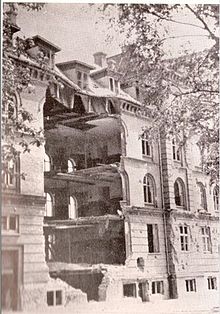The Pathfinders were target-marking squadrons in RAF Bomber Command during World War II. They located and marked targets with flares, at which a main bomber force could aim, increasing the accuracy of their bombing. The Pathfinders were normally the first to receive new blind-bombing aids such as Gee, Oboe and the H2S radar.

633 Squadron is a 1964 war film directed by Walter Grauman and starring Cliff Robertson, George Chakiris, and Maria Perschy. The plot, which involves the exploits of a fictional World War II British fighter-bomber squadron, was based on the 1956 novel of the same name by former Royal Air Force officer Frederick E. Smith, which itself drew on several real RAF operations. The film was produced by Cecil F. Ford for the second film of Mirisch Productions UK subsidiary Mirisch Films for United Artists. 633 Squadron was the first aviation film to be shot in colour and Panavision widescreen.

No. 2 Group is a group of the Royal Air Force which was first activated in 1918, served from 1918–20, from 1936 through the Second World War to 1947, from 1948 to 1958, from 1993 to 1996, was reactivated in 2000, and is today part of Air Command.
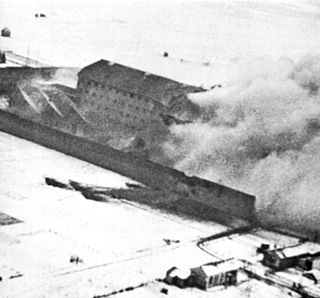
Operation Jericho took place on 18 February 1944 during the Second World War. Allied aircraft bombed Amiens Prison in German-occupied France at very low altitude to blow holes in the prison walls, kill German guards and use shock waves to spring open cell doors. The French Resistance was waiting on the outside to rescue prisoners and spirit them away.

No. 487 (NZ) Squadron was a light bomber squadron established for service during the Second World War. It was a New Zealand squadron formed under Article XV of the Empire Air Training Plan. Although many of its flying personnel were largely drawn from the Royal New Zealand Air Force, the squadron served in Europe under the operational and administrative command of the Royal Air Force as part of Bomber Command. Formed in mid-1942, it operated the Lockheed Ventura and then the de Havilland Mosquito and took part in over 3,000 operational sorties before being disbanded at the end of the war in late 1945.

Group Captain Percy Charles "Pick" Pickard, was an officer in the Royal Air Force during the Second World War. He served as a pilot and commander, and was the first officer of the RAF to be awarded the DSO three times during the war. He flew over a hundred sorties and distinguished himself in a variety of operations requiring coolness under fire.
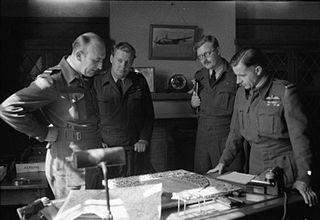
Air Chief Marshal Sir Basil Edward Embry, was a senior Royal Air Force commander. He was Commander-in-Chief of Fighter Command from 1949 to 1953.
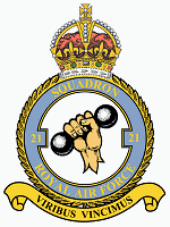
No. 21 Squadron of the Royal Air Force was formed in 1915 and was disbanded for the last time in 1979.

No. 464 Squadron RAAF is a Royal Australian Air Force (RAAF) unit responsible for public relations. It was originally formed in the United Kingdom during 1942 as a bomber unit. It comprised personnel from Australia, Britain, Canada, New Zealand, South Africa and the Netherlands, the squadron served in the light bomber role, undertaking operations over France and the Low Countries, from bases in England. It also flew night fighter missions. Later, following the Allied invasion of France, the squadron moved to France where it was used to interdict German transports and infrastructure. It further engaged in several low-level precision raids against Gestapo targets in France and Denmark. The squadron was disbanded in September 1945, following the conclusion of the war. No. 464 Squadron was re-formed in January 2021 when the RAAF's public relations functions were transferred from No. 28 Squadron.

Operation Paravane was a British air raid of World War II that inflicted heavy damage on the German battleship Tirpitz, at anchor in Kaafjord in the far north of German-occupied Norway. The attack was conducted on 15 September 1944 by 21 Royal Air Force heavy bombers, which flew from an airfield in the north of the Soviet Union. The battleship was struck by one bomb, and further damaged by several near misses. This damage rendered Tirpitz unfit for combat, and she could not be repaired as it was no longer possible for the Germans to sail her to a major port.
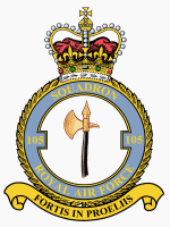
No. 105 Squadron was a flying squadron of the Royal Air Force, active for three periods between 1917 and 1969. It was originally established during the First World War as a squadron of the Royal Flying Corps and disbanded after the war. Reactivated shortly before the Second World War, it was inactive again after the conflict. During its second existence it was a bomber unit and had the distinction to be the first to operate the de Havilland Mosquito light bomber. During the 1960s it was reactivated again for six years to provide transport support for the British Army in the Aden Protectorate and the Far East.
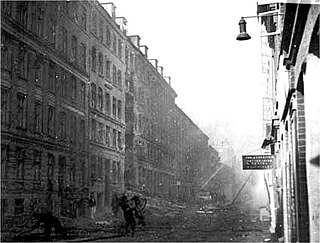
Operation Carthage, on 21 March 1945, was a British air raid on Copenhagen, Denmark during the Second World War which caused significant collateral damage. The target of the raid was the Shellhus, used as Gestapo headquarters in the city centre. It was used for the storage of dossiers and the torture of Danish citizens during interrogations. The Danish Resistance had long asked the British to conduct a raid against the site. The building was destroyed, 18 prisoners were freed and Nazi anti-resistance activities were disrupted. Part of the raid was mistakenly directed against a nearby school; the raid caused 123 civilian deaths. The incident was dramatised in the 2021 Danish film The Shadow in My Eye. A similar raid against the Gestapo headquarters in Aarhus, on 31 October 1944, had succeeded.

The Oslo Mosquito raid was a British air raid on Oslo, Norway, during the Second World War. The target of the raid was the Victoria Terrasse building, the headquarters of the Gestapo. It was intended to be a "morale booster" for the Norwegian people and was scheduled to coincide with a rally of Norwegian collaborators, led by Vidkun Quisling. The raid is also known for it being the moment when the Royal Air Force revealed the existence of the Mosquito aircraft to the British public, when the BBC Home Service reported on the raid the following day.
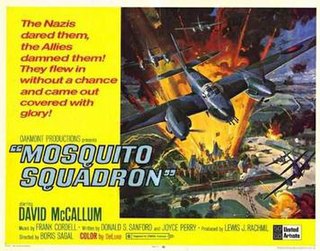
Mosquito Squadron is a 1969 British war film made by Oakmont Productions, directed by Boris Sagal and starring David McCallum. The raid echoes Operation Jericho, a combined RAF–Maquis raid which freed French prisoners from Amiens jail in which the Mosquitos took part.
Air Commodore Edward Barnes Sismore DSO, DFC & Two Bars, AFC, AE was a British air navigator and fighter pilot during the Second World War, and a senior Royal Air Force officer in the post-war years. Sismore served as the thirteenth Commandant Royal Observer Corps between 1971 and 1973.

The de Havilland Mosquito was a British light bomber that served in many roles during and after the Second World War. Mosquito-equipped squadrons performed medium bomber, reconnaissance, tactical strike, anti-submarine warfare and shipping attack and night fighter duties, both defensive and offensive. Mosquitos were widely used by the RAF Pathfinder Force, which marked targets for night-time strategic bombing. Despite an initially high loss rate due to low-level daylight attack operations, the Mosquito ended the war with the lowest losses of any of the aircraft types in RAF Bomber Command service.
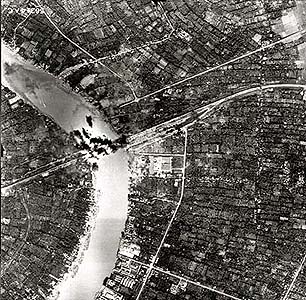
The city of Bangkok, Thailand was bombed by the Allies on numerous occasions during World War II. It was also the target for the first combat mission by Boeing B-29 Superfortresses in June 1944.
Harald Sandbæk was a Danish theologian, author and resistance fighter. He culminated his career as provost of Holmen, Copenhagen, from 1962 to 1973. During the German occupation of Denmark in the Second World War, he was a member of the Danish resistance in Aarhus before joining Den Danske Brigade in Sweden.
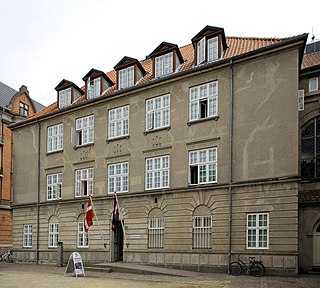
The Occupation Museum in Aarhus, Denmark is a history museum dedicated to the history of Aarhus during the German occupation in the Second World War.

5. Kolonne was an organization using violence and sabotage to oppose the occupation of Denmark by German forces during the Second World War. The organization was formed and based in Aarhus and with some 100 members it was one of the larger resistance groups in that area in the later years of the war. The group was created in response to the destruction of the resistance groups in Jutland by the Gestapo between late 1943 and the summer of 1944. The group functioned from June 1944 to the end of the occupation in May 1945.
